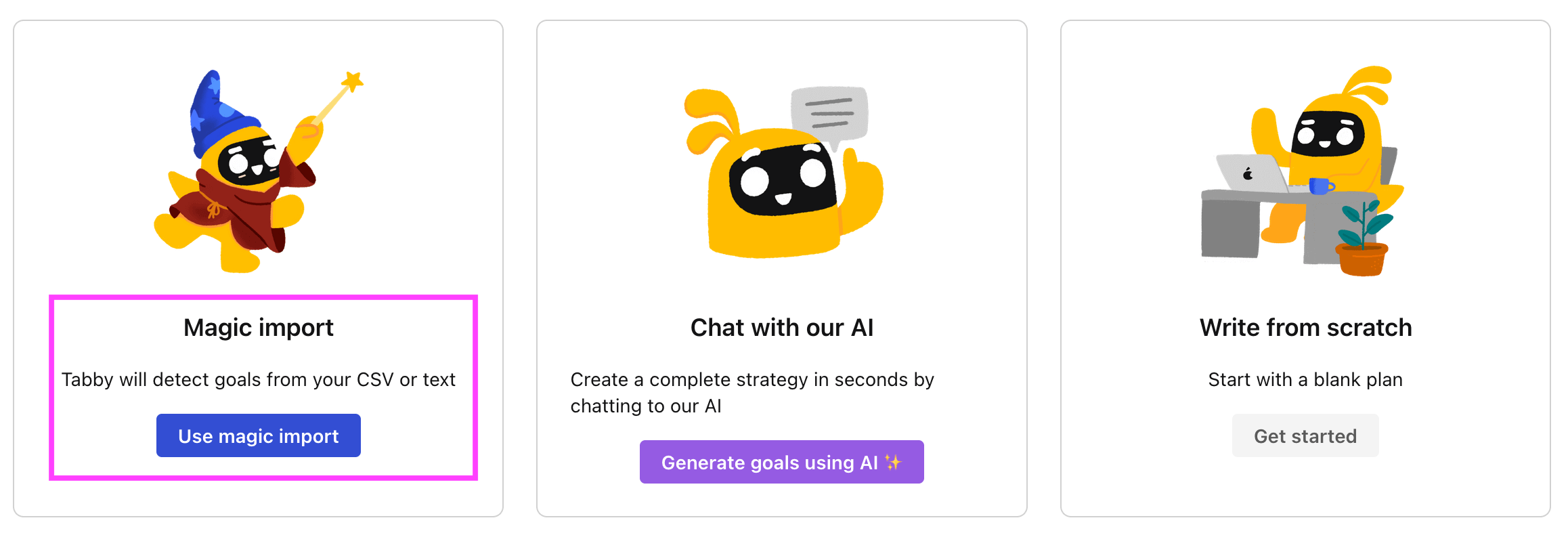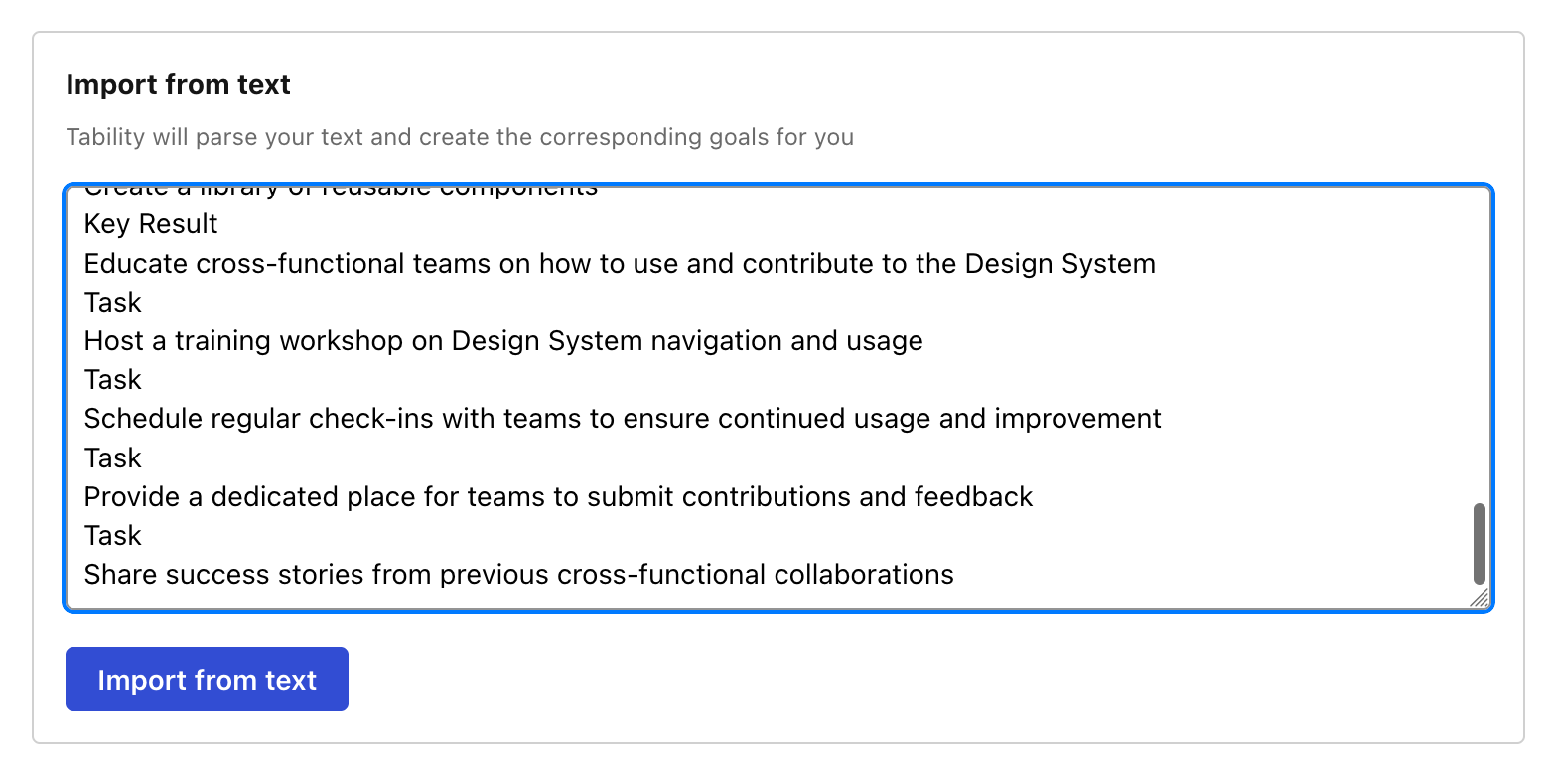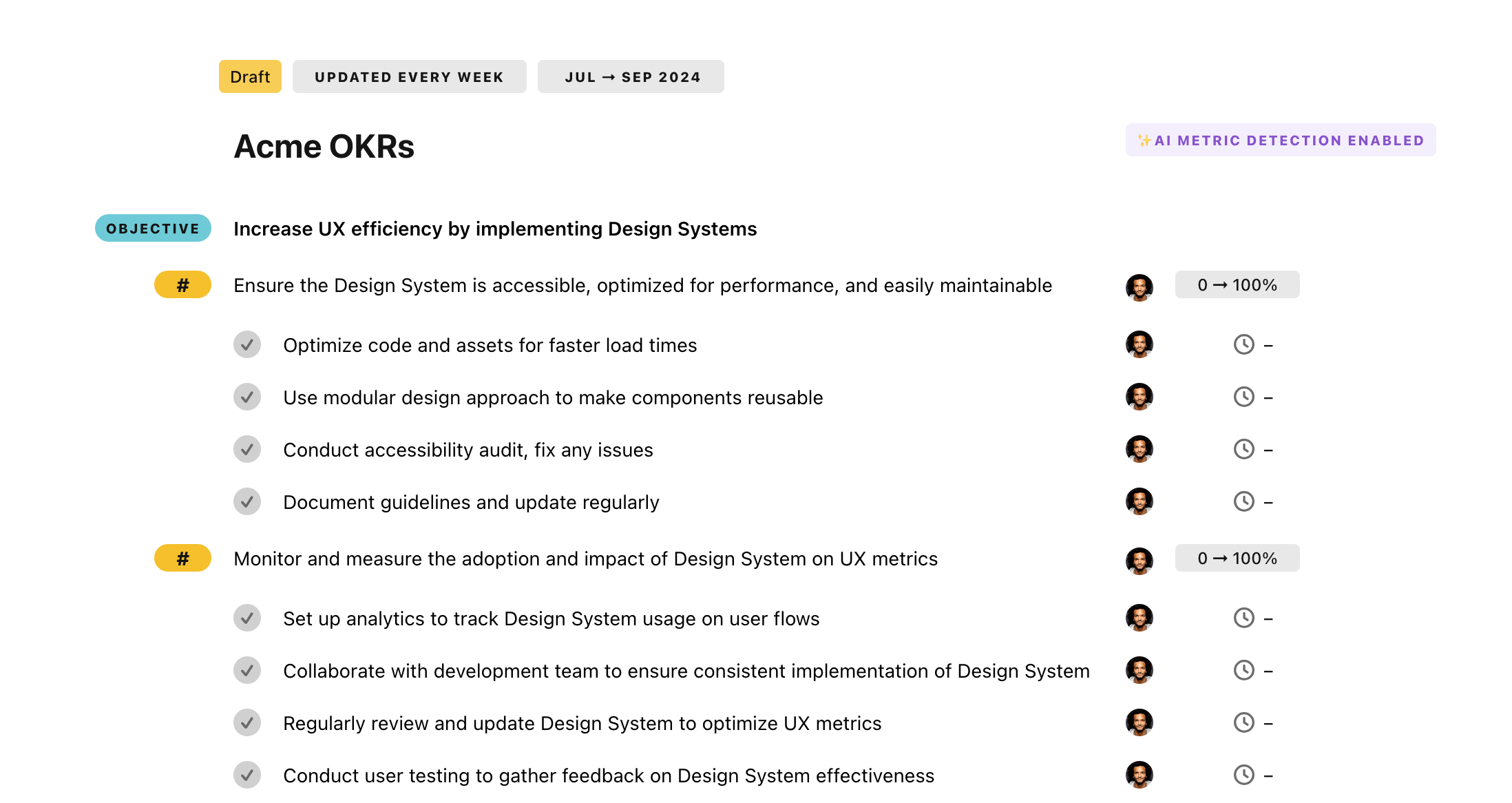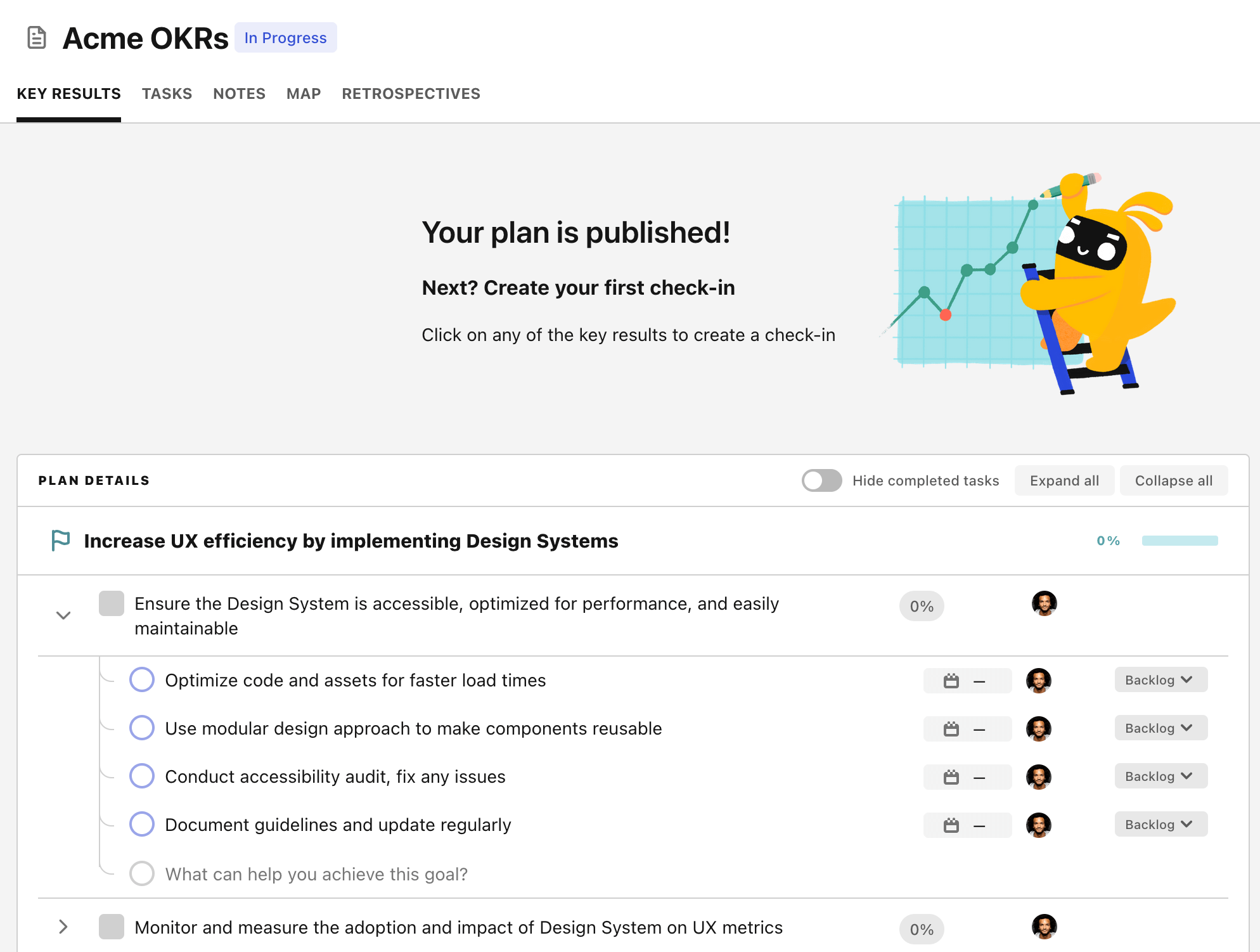OKR template to obtain the CBPA & CBPP International Process Certification
Your OKR template
Post familiarity with the course, the next facet of the OKR underscores the importance of the certification application process. The objective here is to review the prerequisites ensuring that the criteria are met. After this, the completed certification application is to be submitted. Compiling necessary documentation for application submission also forms an integral part of it.
Taking the certification mock tests forms the final part of this OKR. The mission here is to pass two comprehensive certification mock tests securing a minimum of an 85% score. For achieving this feat, identifying the target certification and procuring related mock tests is crucial.
The last part also involves meticulous planning and sculpting of a consistent study routine. Post giving the tests, a hands-on review, and analysis of test outcomes become imperative to brush up on weak areas. This approach ensures that the applicant is all prepped up to crack the certification exam successfully.
ObjectiveObtain the CBPA & CBPP International Process Certification
KRComplete 3 related courses for knowledge enhancement by week 6
KRSubmit certification application process upon meeting the prerequisites
Review prerequisites to ensure criteria met
Submit completed certification application
Compile necessary documents for certification application
KRPass 2 full-length certification mock tests with at least 85% score
Identify target certification and obtain related full-length mock tests
Plan and establish a consistent study schedule
Review and analyze test results to improve weak areas
How to edit and track OKRs with Tability
You'll probably want to edit the examples in this post, and Tability is the perfect tool for it.
Tability is an AI-powered platform that helps teams set better goals, monitor execution, and get help to achieve their objectives faster.
With Tability you can:
- Use AI to draft a complete set of OKRs in seconds
- Connect your OKRs and team goals to your project
- Automate reporting with integrations and built-in dashboard
Instead of having to copy the content of the OKR examples in a doc or spreadsheet, you can use Tability’s magic importer to start using any of the examples in this page.
The import process can be done in seconds, allowing you to edit OKRs directly in a platform that knows how to manage and track goals.
Step 1. Sign up for a free Tability account
Go tohttps://tability.app/signup and create your account (it's free!)
Step 2. Create a plan
Follow the steps after your onboarding to create your first plan, you should get to a page that looks like the picture below.

Step 3. Use the magic importer
Click on Use magic import to open up the Magic Import modal.
Now, go back to the OKR examples, and click on Copy on the example that you’d like to use.

Paste the content in the text import section. Don’t worry about the formatting, Tability’s AI will be able to parse it!

Now, just click on Import from text and let the magic happen.

Once your example is in the plan editor, you will be able to:
- Edit the objectives, key results, and tasks
- Click on the target 0 → 100% to set better target
- Use the tips and the AI to refine your goals
Step 4. Publish your plan
Once you’re done editing, you can publish your plan to switch to the goal-tracking mode.

From there you will have access to all the features that will help you and your team save hours with OKR reporting.
- 10+ built-in dashboards to visualise progress on your goals
- Weekly reminders, data connectors, and smart notifications
- 9 views to map OKRs to strategic projects
- Strategy map to align teams at scale